BLOG
|
|
Today is the last day of a long year. It is the last 24 hours in which to make a change to improve your personal fitness in 2017. Huh? How can physical well-being be bettered in just 24 hours?
Consider this: it is how you will accomplish this task in 2018. ONE DAY AT A TIME. You’ll be incrementally better after today, and better after January 1, then January 2, and so on. Even if the improvement is small, you’ll be ‘better’. If the commitment is not made each and every day to complete a scheduled workout, recovery activity, or merely a sitting-cessation break, your fitness will likely not improve over the upcoming 365 twenty-four-hour periods of the next year. Which means a daily schedule is essential to implementing New Year Resolutions you set out to keep through 2018. One definition of the noun “resolution” is: “a FIRM decision to do or not do something”. Like exercise more. Or become more fit. Or run a race. Do you have Resolutions for 2018? A FIRM set of fitness and health goals “to do or not do” for the year? Draft your list today. Make it short and simple; three or less specific goals. Make adjustments tomorrow. Then develop a plan to reach each goal. Finally, rough out a weekly schedule. Spend the next few weeks refining the plan and schedule. Determine the start date as January 15. Make revisions throughout the year if needed, that allow you to persevere in reaching your goals. LAST DAY OF THE YEAR EXERCISE: On this last day of 2017, commit to performing a strength, mobility, balance, or aerobic activity you dread doing that is likely to be a component of your weekly schedule in 2018. Just one repetition, sequence, or 10-minute time unit. Perhaps it will not be as awful or difficult as imagined, and you’ll decide to continue and complete just one set or sequence. And perhaps another, or a full workout. For me this is a push-up. A pool lap, Dead Bug exercise, Hip Bridge. For you it might be a run, stationary bike session, MYRTLS, or triceps dip. Performing this one physical activity today will serve as a psychological exercise as well; one that proves you are up to the challenges set by your New Year Resolutions. And you’ll be ‘better’ today than you were on December 30. You may find that performing the single ‘dreaded’ physical exercise is much easier than setting down resolutions, constructing a plan, and preparing a schedule. However, I find that if I don’t make this effort, my resolve will not be FIRM enough to survive one week into the NewYear. RUN HAPPY!
2 Comments
Those of you who have been maintaining a training schedule after Thanksgiving to be able to participate in a New Year’s Eve or Day 5k are in the countdown to your event. However, record cold temperatures across much of the United States may test your resolve that day and threaten to derail your plans to usher in 2018 with an athletic effort.
Thus far, notice of widespread event cancellations due to weather conditions have not been publicized. Hopefully all will be held as planned. However, for safety sake it may be a good idea to have an alternative planned in case your personal situation prevents participation. Driving to the site of the run or walk might be dangerous on snowy or wet slippery roads. The prospect of waiting for the race to start in frigid wind chill temperatures may daunting and ill-advised with certain medical conditions. Uncertain footing on slick pavement or uneven snow-encrusted trails could be a set-up for injury. There are many reasons to consider not showing up for a race on a very cold, blustery morning or evening, especially if precipitation is forecasted. The purpose of running or walking at an end/beginning of the year event might be to show commitment to oneself that physical activity will be a priority for 2018. Or a symbolic effort to indicate that a healthy approach to life is important for the future. Maybe for some it’s simply an opportunity for fun. Or a chance to show toughness, as this time of year is not known for perfect outdoor conditions that would bring out fair-weather athletes. Thus, should a scheduled race be called off, having a Plan B in place will help save a wrecked event. If an organized competition is not going to work out on December 31 or January 1, DIY events could be just as much, if not more fun, and still signal commitment to fitness in the New Year. It's one of the situations for which Earned Runs bibs are provided, free! Earned Runs has a few suggestions: - If an outdoor run isn’t possible, WALK the outdoor race distance of 5K. it is possible to bundle up more warmly and walk more easily in such clothing than to run in lighter fitness gear worn when running. - 5K is a measure of distance; 5 kilometers, or 5000 meters. Use the number '5000' as basis for your effort. Cycle for 83 minutes on a stationary bike to spend 5000 seconds in exercise. Take 5000 steps indoors in the mall. - Consider any physical exercise effort for 50 or more minutes to be proof of commitment to health in 2018. If you are fortunate enough to belong to a fitness club/gym, opportunities for activity are usually plentiful in these centers. - Start any new workout, one that you have not attempted or have avoided in the past, that is planned for your 2018 exercise routine. The point is to NOT abandon plans to challenge yourself on this holiday. Arrange to perform an small activity that pushes you beyond your fitness comfort level. You’ll start 2018 with confidence! RUN HAPPY! FINDING PROGRAMS THAT WORK FOR YOU. I was cleaning house and sorting print journals and magazines for recycling when the cover of a 6-month old TIME magazine issue grabbed my attention “The Weight Loss Trap…Why your diet isn’t working”. The featured article was written by Alexandra Sifferlin.
The weight loss secret Sifferlin identifies up front, on the first pages of the item, is that “no single diet, from low carb and paleo to low fat ad vegan-will work for everyone.” That’s the big message of the entire 7-page article! The article begins by describing the efforts of an NIH (National Institutes of Health) scientist to find the answer to the puzzling question of how people could successfully lose weight. The scientist had started watching the television show “The Greatest Loser” to learn how contestants were able to shed so much weight week by week. The startling revelation uncovered by his interest in the process was that even under the ideal conditions created by the show, which resulted in speedy reduction in mostly fat mass, 13 of the 14 persons he studied gained back much of the lost weight, and a few became even heavier. At a rate of 2-4 pounds per year. The extensive discussion explains that the metabolism of most dieters was reduced by the process and remained low even after weight was regained! The gist of the advice provided to readers, who search for the answer promised by the article’s title, is that the path to successful sustainable weight loss will be different for everyone. That most persons who eventually decrease their weight and maintain the loss will have tried at least one method, and likely several, without good results before identifying one that WORKS FOR THEM. The diet that seems to take the pounds off a spouse, or friend, or celebrity will probably not have the same effect on everyone who tries it. Individuals will respond differently to different diets. And it doesn’t appear to relate to genetics. Sifferlin described a program that tracks people who have achieved and maintained weight loss of at least 30 pounds for 1 year, the National Weight Control Registry, which offers this information:
The article says that Registry leaders learned at least one valuable lesson from the collected data, that of 100,000 “real-life biggest losers, no two people lost weight in the same way.” Other experts, consulted for this article, advised that the best strategies take a whole-person approach to finding the magic mix of tactics that will result in success. It’s not just the biology of calories in and energy expended that should guide the construction of a plan. Psychology, budget, and behavior, for example, should also be taken into consideration. What does this have to do with EXERCISE? Earned Runs doesn’t have data from a registry of exercisers from which to make conclusions about how to successfully become fit. But here’s the leap of faith: perhaps we can borrow from the work and lessons learned about weight loss. We can translate the findings about dieting to exercise activity; there’s no single program that will be make everyone physically fit. Each person must search for ways to incorporate healthy activity into daily life. No one studio class, sport, or fad exercise will likely lead to overall fitness that can be enjoyed over a lifetime. Those who are interested in maintaining and possibly improving functional fitness may need to try different approaches before finding a winning combination that syncs with individual biology, behavior, psychology, and budget. And like the dieters will need to do, make adjustments as lives and circumstances change. What works well at age 30 may not at ages 40, 50, and beyond. And what seems ideal for single, working, urban dwellers will not probably not fit the needs of a suburban parent of young children. The happy lesson that we learn in the TIME article is that we are not doomed by genes or any other characteristic when it comes to successful dieting, and likely not in achieving fitness either. If the exercise program or gym routine our neighbor is addicted to doesn’t seem to keep us interested or on track to achieve personal fitness goals, no worry. There’s an activity combination that will; each person must continue to explore and try different approaches. As fitness and health resolutions are being formulated for 2018, it is encouraging to believe that a successful strategy may be to evaluate and change what doesn’t seem to be working. NOT to accept failure when a plan doesn’t motivate or inspire perseverance. RUN HAPPY! http://time.com/magazine/us/4793878/june-5th-2017-vol-189-no-21-u-s/ WEIGHT WORKOUT THAT CAN BE ADAPTED TO TRAINING LEVEL. If the idea of performing a kettle bell workout has interested you, the routine featured in a SHAPE.com article by Jaclyn Emerick might get you to actually try one. It’s meant to strengthen the back and shoulders, and in doing so straighten posture wrecked by sitting slumped over hand-held electronic devices for repeated and long periods of time.
A tall and upright posture is one component of good running and walking form. Emerick’s article includes pictures demonstrating workout moves. The kettlebell modeled in the images looks like the 5-pounder I have at home. It’s not the 25-pound+ size usually shown in routines employing this piece of gym equipment, which I also have at home. Those are the only 2 sizes I own. That’s what encouraged me to read the full piece. The very first kettlebell exercise that came to my attention about 7 years ago, was the “swing” promoted by The 4 Hour Body author Tim Ferriss. He had identified it as his choice of the single best exercise to perform to change body composition (lose fat), if only one could be chosen. The 53-pound weight Ferriss used was hefty. Recommendations in online instructional information start at 25+ pounds for men and 13+ pounds for women. I tried this ‘perfect’ exercise, but did not perform it regularly. Concerned I would injure myself as a result of swinging too heavy a weight with imperfect technique. So I purchased a 5 pound weight that was far too light for swings, and did not ever make use of it. Thus this article attracted my attention because it looked as if the 5-pounder might be perfect to use in this set of exercises. Or at least be the weight with which to warm up. In the routine featured by Emerick, expert Matthew R. Staver, a health studio owner is quoted: “pick a weight that makes the last two reps of each set difficult to crank out” "Even if you go heavy, you're not going to build Arnold muscles," he said. "You'll create a sculpted, trim look." Earned Runs thinks this particular kettlebell routine might be perfect for those who want to work with lighter weight kettlebells, and allow moving-up-to or dropping-back-from heavier weights at various points in training. It doesn’t demand that a significantly heavy weight be used. The exercises include: 1) high pull, 2) pendulum raise, 3) side plank fly, 4) good morning shoulder press, 5) bus driver [my favorite of this group], 6) elevated bent-over row, and 7) shoulder salutation. Check out these exercises. Perhaps a couple can be added or switched-in to your favorite routines to help improve posture, good running and walking form, and overall appearance! RUN HAPPY! https://www.shape.com/fitness/workouts/kettlebell-back-workout-makes-you-look-taller-leaner-and-seriously-sculpted http://www.newbalance.com/good_form_walking.htmlwww.newbalance.com/good_form_walking.html https://www.youtube.com/watch?v=pbNCC-BMNKg https://www.kettlebellsusa.com/what-size-kettlebell-should-i-buy-guidelines-for-men-and-women-to-choose-a-starter-kettlebell-weight http://www.stack.com/a/new-balance-good-form-running http://naturalrunningcenter.com/2011/05/28/new-balance-and-playmakers-good-form-running/ https://www.webmd.com/fitness-exercise/features/look-thinner-instantly#1 WAKE UP SLEEPY HEADS, an article by Gabrielle Kassel for SHAPE.com seems to advise. “How to Wake Up Early for a Morning Workout, According to Women Who Do It at 4 a.m.” This may seem like madness to some.
If you calculate back 8 hours to what bedtime should be with this routine, the clock would indicate 8 pm the night before. Turning in any later will potentially shorten the hours available for muscle recovery. If the way is clear to keep this schedule and family, work, or social obligations allow climbing into bed as prime-time TV is gearing up, it can be a terrific idea. An alternative could be to settle for 7 to 7.5 hours of sleep, which pushes bedtime forward to 8:30 or 9 pm. Weekends might provide an opportunity to grab more shut-eye time. Another alternative is to wake a bit later, at 4:30 or 5am, and adjust exercise, travel, and grooming time to be ready to start non-exercise related daily activities by 6 to 7am. The fact remains that time cannot be created, and if wake time shifts, so must bedtime if sleep hours are to remain in the healthy range. After living in several parts of the country, I consider my optimal wake-up time to be time zone dependent. When living on the west coast in the pacific zone, the time difference meant that my husband and I were eager to get going very, very, early, keeping hours as close to the eastern zone as possible. That’s because we had work and colleagues back East, and wanted to have our productive day in parallel with theirs’. Also, our family lived in the eastern and central zones, and it was more convenient to shift to earlier hours. We did not have young children then. We woke at 3am most weekday mornings to catch the pre-market business news and national weather (I love the Weather Channel). Both of us regularly traveled back and forth, west to east, to tend to work and family obligations, so it made sense to synchronize our body clocks with the other time zones. Without those reasons, I am not sure we could have kept to that early schedule. Crazily, in those years I started work early and quit to exercise in mid-afternoon, the exact opposite of the topic of this article. Now, living back east, 4:30 to 5am is still convenient and favored for exercise, but it makes enjoying later social engagements difficult. On weekends a nap might be able to smooth out the evening time roughness, but this is a luxury not many in modern society can afford. The women in the article make excellent arguments for their pre-dawn start times and offer helpful tips to maintain these exercise hours. Like putting the alarm clock in the bathroom or the programmable coffee maker in the bedroom. One of the women explains how health issues help her enforce exercise discipline. Another relates it to an unpredictable work schedule. If you can swing this morning schedule, it is empowering. if you cannot, don’t sweat it. Those who brag about early schedules might be expressing insecurity. If you accomplish your exercise goals, you’ll be empowered regardless of the time your clock sounds its alarm. RUN HAPPY! LAST WEEK OF DECEMBER Why suffer the pressure of composing a New Year Fitness Resolution list on January 1? Prepare a draft this week and then edit it in the first week of the year. Not a mental list, but a HARD COPY, on paper. A huge barrier to accomplishing goals set at the start of the new calendar, in Earned Runs experience, is to not have invested enough time and effort in the process of building a list of exercise and health behavior to-do’s.
There’s no rule that work on resolutions must start on day #1 of the next 365 in 2018. I like to mark the start date as Martin Luther King Jr. Day. In 2018, it falls on January 15. Holiday festivities can leave us exhausted and disorganized. Resolution makers might be prevented from starting immediately on self-promised improvements by travel disruptions, resumption of full work, school, and family schedules, and general household cluttering that resulted from holiday activities. It’s nearly impossible to begin new fitness and health regimens under these circumstances. Disappointment in not being able to start reversing previous bad habits leads to discouragement. Before we’ve even started. Earned Runs suggests this step-by-step process, or something like it, to give yourself a chance at success in establishing, starting, and keeping your 2018 resolutions: Last week of December 2017: Buy or make a calendar, log, or diary for 2018 fitness/health tracking DRAFT a list of resolutions that cover exercise, diet, and health goals on page 1 First week of January 2018 (1/1-7): Revise the list on page 2 DRAFT a list of specific goals or activities that will help keep resolution on pages 3 Organize and clean food storage and prep areas, build shopping list of needed items Organize and clean closets, gym bags that hold workout clothes Second week of January 2018 (1/8-14): Finalize resolution list on page 4 Finalize goal list on pages 5 Continue to organize, clean food storage and prep areas, by needed items Continue to organize, clean closets, gym bags that hold workout clothes, buy new items Construct a calendar for log book or January 15-March 31, even if rough dates must be used, revise at that date , fill out next quarter after that date.
Start on new resolutions! An Earned Runs example can be seen by clicking on this link. The points to be made: about making resolutions: a) Don’t wait until January 1 to start working on resolutions b) Don’t feel you need to begin those resolutions on January 1; More advance planning and thought will possibly help you continue to successfully make the desired changes identified by the resolutions. RUN HAPPY! Waiting for the Birth. St Patrick's Cathedral, New York City.
Taken by PKSenagoreDecember 5, 2017. All rights reserved. 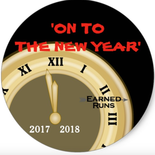 WEEK 4 ON TO THE NEW YEAR 2017-18 5K TRAINING PLAN This week’s schedule is posted a day early in advance of the usual post day, Sunday, which is Christmas Eve. That day’s workout is a simple 30-minute walk. The remainder of the holiday week you will be tapering. Sort of. Technically a 5k doesn’t require a taper, but this plan tries to accommodate what may be a more relaxed holiday week atmosphere. Tuesday’s and Wednesday’s run/walks are short and you should pace them on the fast side with intensity, to ready yourself for the race. Many trainers and coaches say that during a taper, the idea is to decrease mileage but remind your body it will be going fast soon by keeping your shorter runs at the level of intensity you have been training at in interval sessions (in this plan they are the run/walks) or tempo runs (run about 10 seconds/ mile slower than 5k race pace). Avoid running at the slower speed of easy long runs. It’s important to perform your mobility routine; even daily is a good idea to keep you in good form to make the 5k effort on the Sunday EVE or Monday DAY of the NEW YEAR. The December 30 schedule only calls for MYRTL'S and Dynamic Warm-ups. You likely won’t be stiffening up terribly, but the act of performing these exercises may help you to mentally stay sharp in advance of the run (or walk). A brisk walk or short run can be worked into either of these days if you wish to get some kind of exercise. This schedule is not intended to prepare you for a personal best. It's purpose is to keep you on track to run an easy 5k on either December 31 or January 1. Have a wonderful ‘between-the-holidays’ week. Enjoy your New Year's Eve or Day 5K! Congratulations for training to be able to start 2018 with an invigorating run or walk! RUN HAPPY!
REDUCE YOUR RISK OF SLIPPING ON ICE AND FALLING if you plan to take your walking or running sessions outdoors. These plastic, lightweight, slip-on traction cleats, from Yak Trax fit nicely over athletic shoes. The addition of abrasion-resistant, zinc-coated steel coils to net-like elastic bands, which stretch over shoe soles, is what provides stability.
I’ve used Yak Trax for years and they are fairly durable. The running shoes aren’t damaged by the devices, but the shoes do seem to show wear from being taken out in the snow regularly, especially if there is salt on the road. I reserve an older pair of shoes to place them on, not removing the Yak Tax after runs or walks, and keep the pair exclusively for outside use in the snow. Running or walking carefully on hardened snow doesn’t permit speed work. I wear other shoes on days or occasions when the roads/streets are clear of precipitation and traction cleats aren’t needed or I’m indoors. Mostly because I think the process of stretching the wet elastic tends to degrade it; by not removing the cleats I imagine I extend the time period before one of the bands breaks. The manufacturer may disagree and I may be wrong but this is how I wear them. Because the shoes get wet and must be air-dried overnight anyway, I just don’t remove the Yak Trax. If one cleat of the pair breaks, I keep the undamaged cleat, and buy another pair. I’ve got a back-up in case of other breakage! The feel is a bit awkward initially, possibly because of awareness that the cleats are on. After a short while I forget about their presence and am able to concentrate on running or walking. I always wear thicker wool running socks to help keep my feet dry and warm, and pair them with wool / acrylic sweater-material leg warmers to cover my ankles too, like gaiters. If the snow is more than a few inches deep, they cover the shoe tongue/lace-up area. Most running shoes have a mesh toe-box that lets snow seep beneath the mesh, where it melts. A tight-weave wool sock blocks the moisture from reaching the skin of my foot if the run is not too lengthy. The leg warmers keep my ankles toasty and dry and block some of the snow from crusting at the tops of the shoe. Real gaiters aren’t that warm, in my opinion. RUN HAPPY! https://yaktrax.implus.com
IT’S THE FIRST OFFICIAL DAY OF WINTER! Whatever the temperatures may be in your location, the date is associated with the onset of cold weather. Having lived in both snowbound, lake effect regions of Michigan and Ohio, and coastal, marine- layer areas of the Pacific (California) and the Gulf of Mexico (Texas), when the thermometer shows a significant DROP in any location north or south, IT FEELS COLD.
Is it safe to run in the cold? It depends how you are dressed and how wet you become, according to comments from experts provided in an article by Kelly O’Mara for running.competitor.com, “How Cold Is Too Cold to Run?" It seems the mostly commonly feared consequences, injury to muscle or lungs, aren’t significant concerns. “You should wear layers, particularly layers that stay dry. Once clothes get wet they can freeze and become dangerous for an athlete.” Other dangers discussed in the article include frostbite in severe conditions, and falls. Specific advice on layering is provided that’s worth the read. The answer to the question posed by the title seems to be that there are very few situations in which the coldness itself would be dangerous to health, if steps are taken in advance to dress appropriately. The best tip of all in the O’Meara article is that mittens are warmer than gloves. Coming from Michigan, the “mitten state”, I know this. But many do not. The heat generated from individual fingers warms them all when held close together in the mitten. Separated from one another, fingers in gloves do not enjoy the warmth radiated by their buddies. Earned Runs thinks that runners and walkers should pay attention to these factors: Distance: cover less. Bundled in more clothes, struggling against wind and a slippery wet or snowy surface, will likely require more energy and potentially leave you too tired to maintain a constant pace. Once you slow down, the amount of heat generated by an initially fast pace will decrease. There’s the possibility you will be miles out from the shelter of your car or home when you begin to tire and feel cold. Routes: repeat a short stretch. A run or walk in an exposed area can be much more difficult and risky than one in a sheltered neighborhood. I loved my long route along the Lake Erie shore, west of Cleveland. But it wasn’t a bright idea to run this wind and snow-blasted area in all weather conditions. Multiple short loops on a quiet narrow street lined by homes and trees makes much more sense on a cold rainy day or a frigid winter morning. Such streets tend to have less traffic and it’s possible to claim the center of the road on weekend mornings. Wind: a good reason to run or exercise indoors. Most of us are familiar with the meteorological term “wind chill” temperature. Recently this has been translated to “feels like” temperature. Regardless, we know this degree number is always lower than the actual temperature. So, the clothing layers chosen for a run or walk may not be sufficiently protective on a vary windy day, even if with an wind-breaker outer layer . That’s reason number 1 not to run outside. When facing a cold, wet, driving wind, running and walking form can change. At least in the portions of the session that it’s not aimed at our backs. The benefit to training seems minimal if form is poor. That’s reason number 2 to choose another workout or run/walk indoors. Uneven slippery footing: injuries await. Falling isn’t the only danger. Other soft tissue and joint problems can arise from repeatedly covering ground with uncertain footing or for long periods of time. I have personal experience in this area! Unfortunately, outdoor paths may not be clear of black ice or painful slush-hardened-into-ice for months in the northern most areas of the country. The solution is to scout other areas and find routes in which surfaces are sufficiently cleared, smooth, and safe for the duration of winter. Bottom line is that cold weather should not discourage runners and walkers from getting outside if care is taken to dress wisely, choose appropriate routes, and modify training to avoid injury. It’s also best to know when to take ourselves out of too-cold weather, just as we do in too-warm weather, especially if we are attempting a high quality workout. RUN HAPPY! http://running.competitor.com/2014/01/training/how-cold-is-too-cold-to-run_93795 IF NOT ‘RUN HAPPY!’, WHAT SHOULD SIGN-OFF BE? Recently I read a quote featured on an email from Motive Running. “Run often, run long, but never outrun your joy of running.” It was attributed to Julie Isphording, a former US Olympic marathoner. A very short Wikipedia item about Isphording indicates she competed in but did not finish the marathon event at the 1984 Olympics.
Although not perfectly, one could substitute a number of other activities for the words “run” and “running” in this motivational saying. Friends and family who do not or cannot run have reminded me of this possibility. Some protest that is was not they who outran joy, but running too long and often which forced its end. For some former runners, injury is the underlying cause for not running. They respond to Isphording’s words with sadness, frustration, or anger. Those who have given up on all sport activity after injury are sad about the loss. Those who seek but have not yet successfully found a substitute activity they love as much as running, are frustrated. And those who have taken up and are challenged by other athletic efforts might be a bit angry, proclaiming they have moved on and don’t want to look back. Those who don’t run because they don’t like it tend to be in the angry camp if they prefer other sports. Like tennis, swimming, walking, hiking, outdoor cycling, stand-up paddleboard, for example. Newer sport activities that now attract legions of enthusiastic followers include obstacle course and fitness exercise competition, and indoor cycling. It’s rather insulting to indicate that love of running is superior to enjoyment of other athletic pursuits, they indicate. Earned Runs has for the past two years signed off with a farewell wish, “RUN HAPPY!” The phase is meant to encourage runners to feel the joy associated with being an amateur. To rejoice that professional career pressures don’t weigh on most of us. That each running session can celebrate freedom of movement on two legs. Also over this time Earned Runs has encouraged runners to train safely to prevent injury and wisely to get the best performance from our bodies. Cross-training, by engaging in non-running exercise, has been promoted. Strength, balance, and flexibility/mobility work has been incorporated into running training plans. Rest and recovery strategies have been stressed. Thus, when I saw the Isphording quote it hit me that “RUN HAPPY!” might not be the best sign-off sentiment, and that it might represent a kind of running-tunnel vision. At some point in life, because of family or work circumstances, illness or injury, or locational challenge, running may not be possible. Instead of reacting with sadness, Earned Runs feels its followers should be prepared and enabled to embrace necessary change and find joy in a variety of exercise activities. And those who don’t love to run shouldn’t be excluded from the Earned Runs farewell wish for happiness! But what to sign-off with? “EXERCISE”, “MOVE”, or “RUN/WALK/ETC” HAPPY? Do you have a suggestion? In 2018 there will be a new sign-off. It will take more thought. For now, “RUN HAPPY!” https://www.motivrunning.com https://en.wikipedia.org/wiki/Julie_Isphording SIMPLY WALKING, WITH OR WITHOUT A DOGGY PAL, is an easy outdoor exercise activity that doesn’t require much advance preparation or planning. A check of the weather to guide choice of apparel and accessories is about as high tech as walkers need to get, especially if the route involves smoothly-surfaced sidewalks or asphalt-paved bike paths.
However, if exercise plans become a bit more adventurous, and the degree of difficulty of the effort is elevated to tackle trails, novices might welcome some knowledgeable assistance from experts. About suitability of a trail for level of experience, choice of trail based on scenery, advance training that will ensure accomplishment of a goal objective and thus enjoyment, and proper gear. The process of mentally planning for 2018 and beyond may inspire some everyday walkers, runners, and gym exercisers to consider undertaking a personal ‘epic’ adventure. But where to start? There are companies that lead groups or individuals in such endeavors. But the trips are expensive and require a considerable amount of lead-time to schedule, money to finance, and friends to cajole into joining. What if you want to start with something less than truly “EPIC”? Perhaps just to try hiking half a day in a nearby scenic spot, running a trail race in the winter, or cycling on a fat tire bicycle? Maybe by yourself or with a group that assembles on the spot? “Take It Outside: what you need to hike, bike, or run trails” by Kelly Mickle is a slideshow article filled with useful information and, best of all, links to more useful information. It’s from fitness.com. Trail Hiking:
Running on unevenly frozen, snowy roads with patchy ice may be a discouragement to getting outdoors this season. Consider winter hiking and biking as a way to get yourself out of the gym. Mickle’s article suggests that now might be a great time to organize a few new activities. RUN HAPPY! https://www.fitnessmagazine.com/workout/cardio/outdoor-workouts COMBINATION OF MOVES THAT MAY REFRESH YOUR STRENGTH WORKOUTS
Andrew Yeung put together a short workout for myfitnesspal.com, “Quick At-Home Body Weight Workout” that is fairly simple and does not require gym equipment. I’ve got a go-to bodyweight routine that is my fallback when I need a head-to-toe strength make-over. It takes at least 90 minutes to get through, so usually I complete parts of it on different days. Yeung’s session offers a refreshing alternative to the “same old, same old” stuff that can stimulate both mind and body. There are pictures demonstrating the moves. Circuit 1 (4 times no rest) Reverse lunge, 8 repetitions each leg; Spiderman push-up, 10 reps; wall slide, 10 reps Circuit 2 (3 times no rest) Super plank, hold 20 seconds; hip bridges, 10 reps; crab walk, 10 seconds back and forth Each of these moves has been a component of some other routine that I’ve been given by a trainer in previous years. So why change things up and try this one, if there’s really nothing new? Why mix-up music on a playlist? Why create new clothing outfits with different combinations of favorite older pieces? Why try new flavor pairings when cooking and eating? Because it’s not ‘economical’ to ditch all the old songs, clothing, or food tastes just to acquire new items and experiences. Expensive not only in money but in time and effort needed to learn new moves or to learn that we do or don’t like them. Playing songs in a different order, coordinating wardrobe pieces in novel ways, or savoring contrasting taste sensations can coax excitement from these familiar and beloved, but tired, elements of our lives. So it is with exercise. We don’t need to start from the very beginning to have a fresh approach. We can mix-up what, how, and where we perform certain workouts. If we usually strength train at the gym, do it at home, but cross-train at the gym. Try rowing instead of cycling; swimming instead of the elliptical. Add weights to some workouts. Walk rather than run the indoor track, but employ a high intensity interval training approach. The Yeung article provides a mix of bodyweight exercises that could be fun, not a chore, to get through quickly. Even if you’ve done most of them before, this combination may inspire regular or frequent workouts. RUN HAPPY! http://blog.myfitnesspal.com/quick-home-bodyweight-workout/ 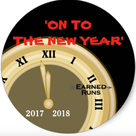 WEEK 3 ON TO THE NEW YEAR 2017-18 5K TRAINING PLAN You will be getting down to business the end of this week and running 3 miles. That’s almost the full distance of next week’s race, and you’ll be doing it on a day which happens to be the day before Christmas Eve. And almost the end of Hanukkah. Very busy. However, it’s such an exciting day that you may have no trouble leaping out of bed in the early morning to begin the last-minute crush of preparation with an invigorating workout. Or, after accomplishing nearly every task on your list of to-do’s, you might be looking forward to a calming and relaxing run at day’s end. If contemplating that this Saturday’s run will stress you beyond what’s healthy, switch it with Friday’s 20 minute walk or Thursday’s run/walk. No problem. RUN HAPPY! |
BRIDGE TO PHYSICAL SELF
Running, walking, and fitness activities enable us to experience our physical selves in a world mostly accessed through use of fingers on a mobile device. AuthorEARNED RUNS is edited and authored by me, runner and founder. In 1978 I began participating in 10K road races before 5Ks were common. I've been a dietitian, practiced and taught clinical pathology, and been involved with research that utilized pathology. I am fascinated with understanding the origins of disease as well as health and longevity. Archives
November 2023
CategoriesNew! Search Box
Earned Runs is now searchable! Check it out...
|
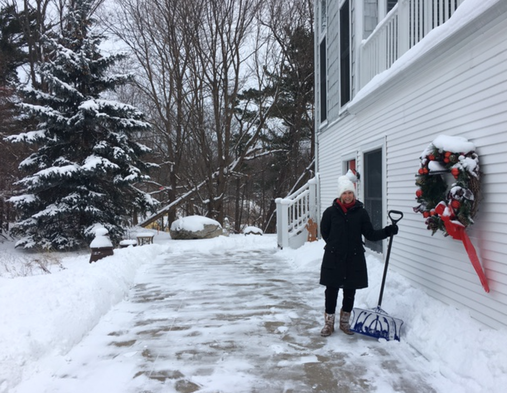


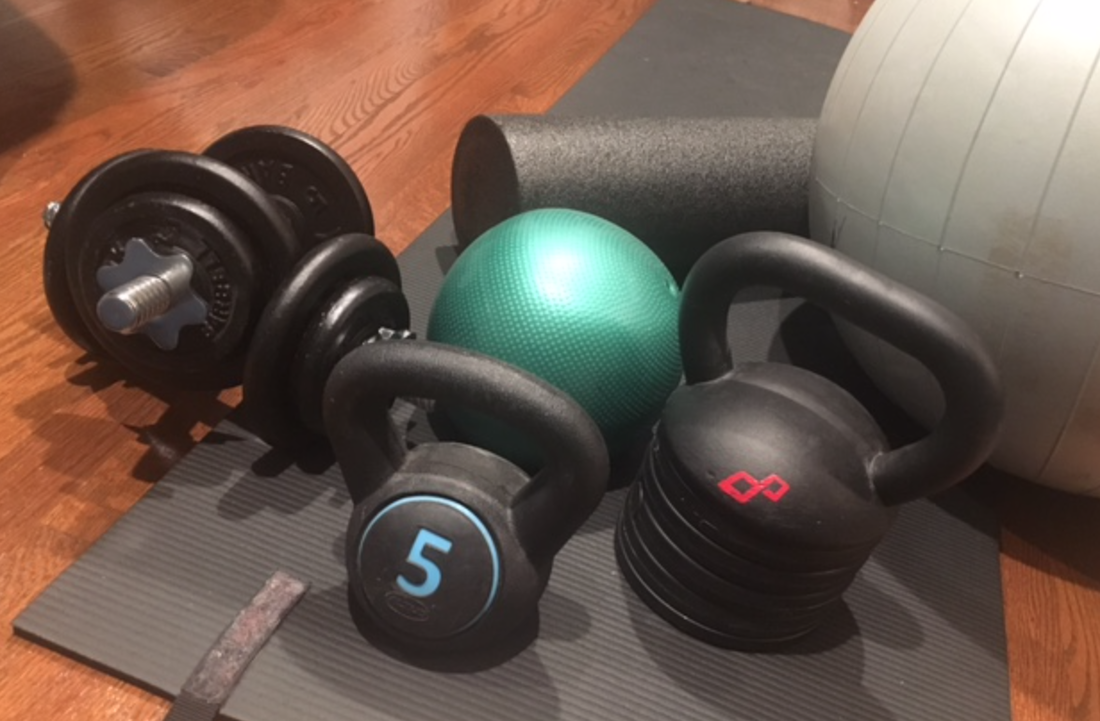




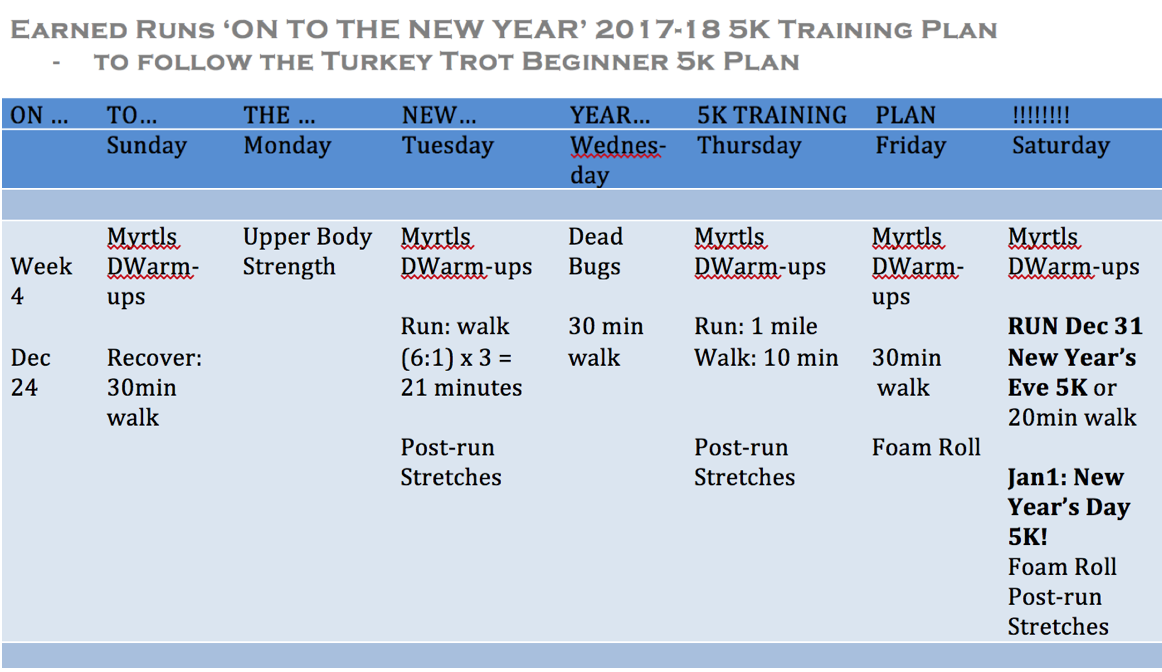
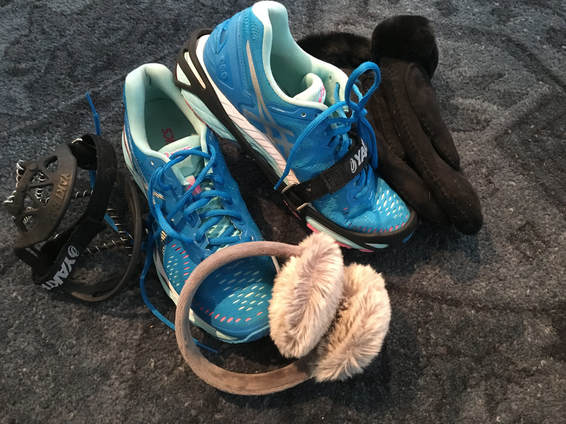




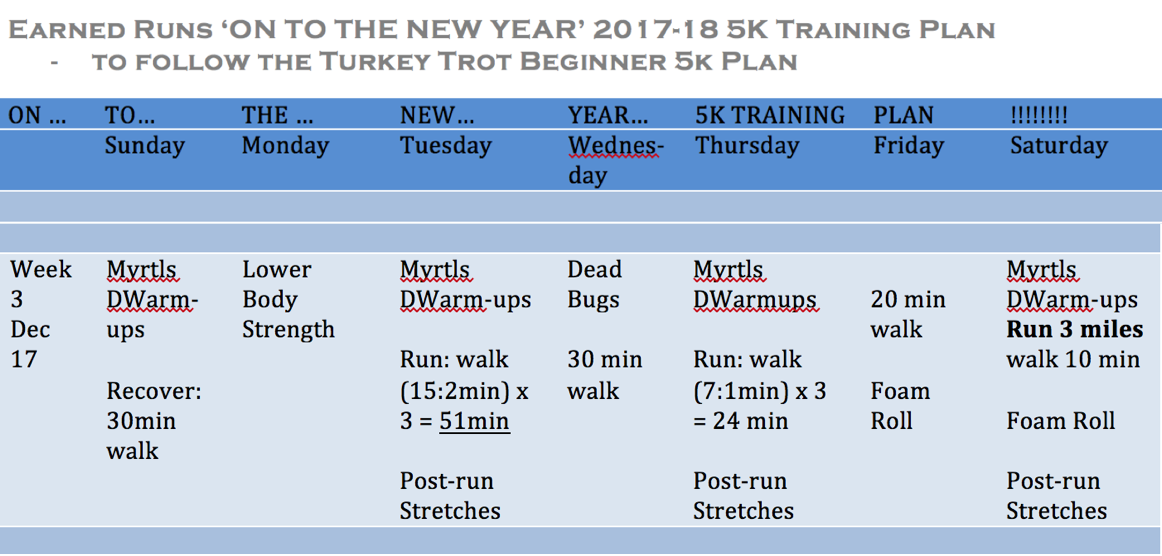
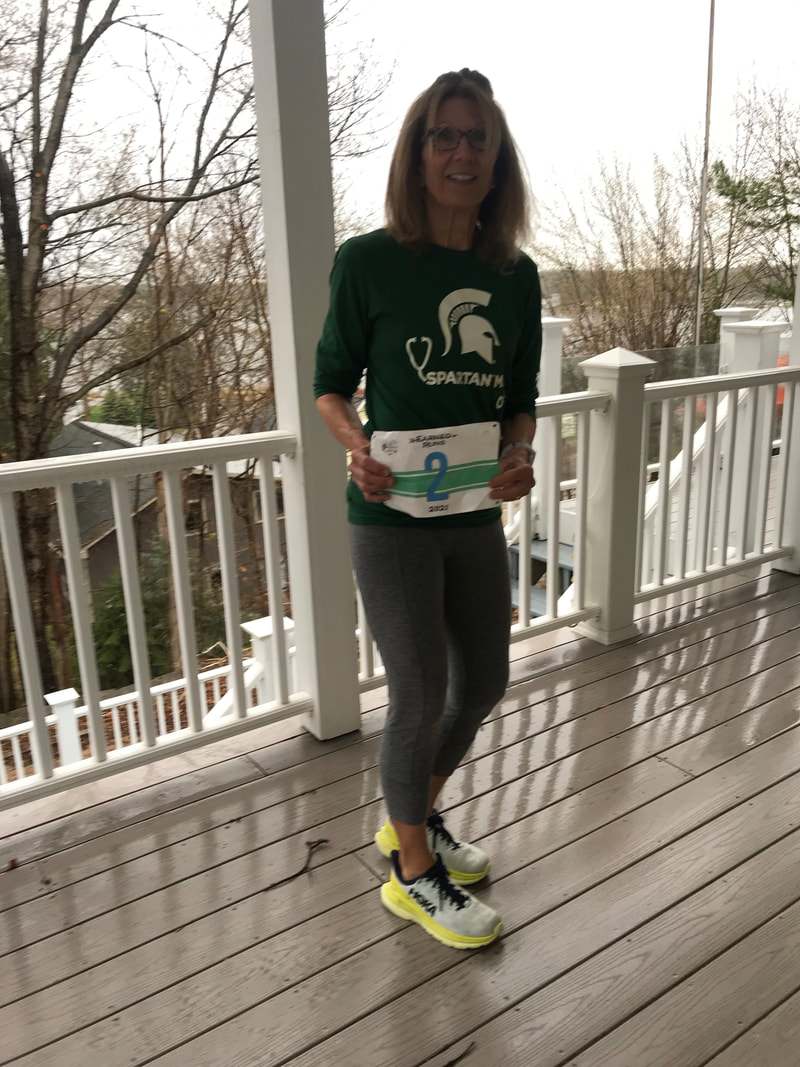
 RSS Feed
RSS Feed